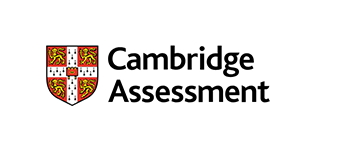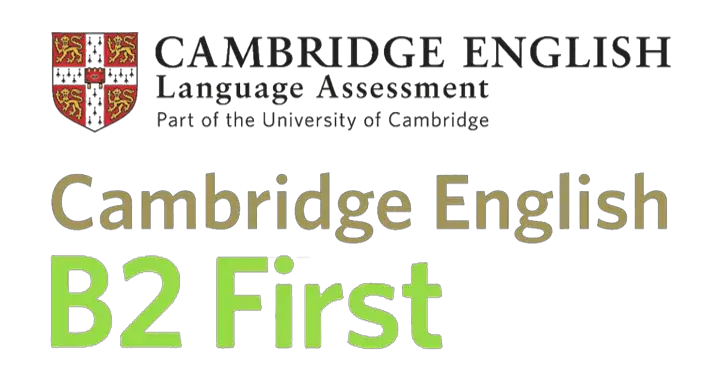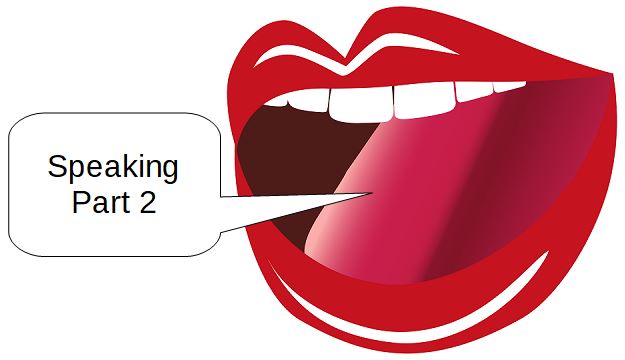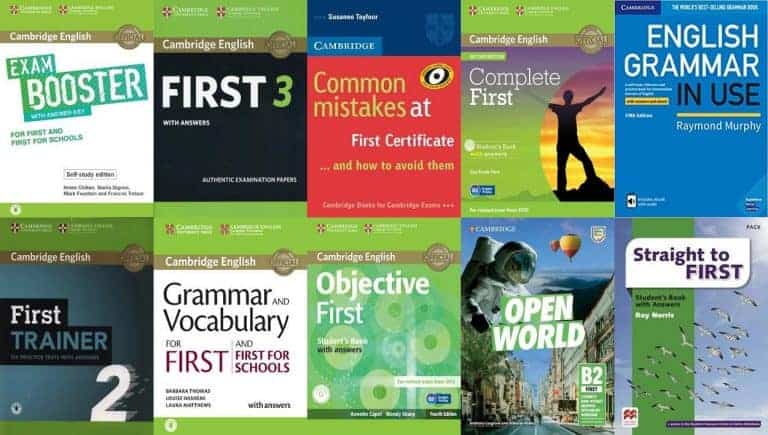

Teacher’s Guide to the Cambridge B2 First Writing Exam
If you’re preparing students for the Cambridge B2 First (or First for Schools) exam, the writing part is super important. It’s the area where you can have the most impact as a teacher. My students have great success thanks to the strategies I’ve developed that almost guarantee good marks.
But it’s all a bit intimidating to begin with. There’s lots to consider from the perspective of a teacher unfamiliar with the Cambridge exam format.

That’s what this article is all about. I’ve prepared students for the Cambridge B2 First exam since 2016, and I’ve developed a robust method for getting results. And here I’m going to share it.
First of all, we’ll look at the format and structure of the writing exam. Next, we’ll analyse the assessment criteria and think about what students need to do to score the most points. Following that, we’ll talk about how to use model examples to teach and assess. At the end, I’ll run you through the 3-step writing process.
For a more general look at how to teach writing to EFL/ESL students, check out my Big Guide to Teaching EFL/ESL Writing: 16 simple steps.
Before we get started, I highly recommend you download the official Cambridge English B2 First Handbook. It contains a wealth of information, some of which I’ll be referring to here, along with my own strategies. Download it from this link . Page 29 is the start of the writing section.
So let’s get to it!
What is the format and structure of the Cambridge B2 First writing exam?
What you need to know:
- The exam lasts 1 hour and 20 minutes.
- Candidates complete 2 writing tasks (roughly 40 minutes each).
- Candidates must complete one essay, plus one other task, choosing from a variety of options.
- All tasks should be answered with 140-190 words.
- Both tasks contribute 50% to the overall writing score.
- Each writing task has a short written prompt which tells the candidate what topics to write about.
The essay is always the first question, and is compulsory.
After the essay, candidates get given a choice of three writing tasks (four in First for Schools). There are several possible tasks that could come up, depending on which exam you take. They are:
- Letter (usually formal)
- Email (usually informal)
- Report (First only)
- Story (First for Schools only)
- Essay (First for Schools only)
You can’t predict which writing types will come up. However, as candidates can choose from the selection, it means they don’t have to prepare for every single type.
In fact, in my classes, we never prepare for the report (or the story in First for Schools), instead just focusing on the first four from the list.

I also suggest students avoid the formal email/letter, because it can be tricky to remember the conventions and phrases like “yours sincerely” or “yours faithfully”. We prepare for it, just in case, but I advise choosing an informal email, review or article if possible.
Eliminating some of the tasks like this allows students to ace the ones you do prepare, and it doesn’t overwhelm them with too much information. Additionally, the ones we spend most time on (email, review and article) all use informal language, which is generally easier.
How is the Cambridge B2 First writing exam assessed?
If you head to page 36 of the B2 First Handbook, you can see the assessment scale used by examiners. In reality, they have a much more complex rubric – this is just the one they give us mere mortals to make sense of.

Take a look at the four categories at the top: Content, Communicative Achievement, Organisation and Language. Each is marked from 0 to 5, giving a total score out of 20.
When you combine both tasks together, you get a score out of 40. The global exam pass mark is 60% (24/40), but we want to aim for higher than that to make up for weaker sections (like the Use of English).
You may be surprised at how little vocabulary and grammar are considered in assessment. They’re combined in the Language category, making up just a quarter of the overall grade. So what are all the other points for? That’s where things get interesting.
- Content = answering the question and staying on topic.
- Communicative achievement = using the correct register (formal/informal), tone and conventions for the specific type of task.
- Organisation = use of paragraphs and connectors to present information coherently.
- Language = range, complexity and accuracy of grammar and vocab.
What I really like about this is you can quickly train your students to get high scores in Content, Communicative Achievement and Organisation.
This can make up for deficiencies in grammar and vocab. Of course, they need to reach a certain level of ability with the language, but mistakes here and there don’t ruin their grade.
Now I’m going to explain how you can get your students up to a 4 or 5 in those three categories.
Content – answering the question
The Content category boils down to answering the question fully. Each writing task has a prompt outlining what the candidate should write about. Candidates should write about all of them.
Now, it’s not quite as easy as it sounds. Students need to stay on topic, and cover each of the required points in sufficient detail that the “target reader is fully informed”. That means supporting opinions with examples and providing necessary details.

It also means avoiding anything that’s irrelevant to the task . Lots of students find a maximum limit of 190 words difficult to stay under, because they start writing about off-topic ideas, or going into far too much detail on one thing.
There’s a balance which students will find after a few rounds of practice. Later on, we’ll talk about paragraph structure, and how it can help students stay on topic and write the correct amount.
Going over or under the 140-190 word limit will dramatically reduce this score. Make sure that doesn’t happen.
Communicative Achievement
Getting your point across in a way that’s suitable for the target audience is a vital skill in real life, and Cambridge examiners assess it with Communicative Achievement. There are a few aspects that are considered:
- Register (formal/informal) and tone . A job application letter should contain serious, formal language, while an email to a friend should be jovial and informal.
- Conventions of the writing task . Essays should follow a standard pattern: introduction, arguments, conclusion. Reviews should phrases for recommending things. Emails and letters should have appropriate greetings and sign offs (e.g. I look forward to hearing from you soon).
- Clarity of ideas . This is how well thought out and communicated ideas are. If they don’t make much sense (regardless of how good the language is), the reader will have trouble understanding.
- Reader engagement . Does the writing keep readers interested? This is especially relevant in articles and reviews, where the use of rhetorical questions is strongly encouraged.
As a teacher, you need to ensure students know how to write formally and informally (contractions, colloquialisms, exclamation marks, etc.). You should also teach them some conventional phrases for different writing types.
Not knowing conventions and register is one of the biggest issues EFL/ESL students have when writing. To learn about other common difficulties, read my list of 9 Writing Problems For EFL/ESL Students & How to Solve Them .
Organisation
Paragraphs and connectors. Get these two things right, and students will score top marks.
In almost every writing task, students should write 5 paragraphs . There’s an argument for writing 4 in a review (and occasionally an article), but in all others, there should be 5 without fail.
Typically, the structure looks like this:
- Introduction/greeting
- First topic
- Second topic
- Third topic
- Conclusion/sign off
In a review, the third topic (given in the prompt) is to suggest whether the reader should buy the thing they’re reviewing or not. In most cases, that’s a variation of a conclusion, so paragraphs 4 and 5 can be merged.
Paragraphs should be of roughly equal length (30-40 words) . The exceptions to this rule are letters and emails where the greeting and sign off might be a little shorter than the three topic paragraphs in the middle.
They should also be clearly separated by a line space . And each paragraph should stay within its bounds, not digressing onto other topics, or talking about something totally irrelevant. The 30-40 word guide is a good way to ensure students write enough, but not too much.
Paragraphs aren’t disconnected. To get maximum points in Organisation, students need to use connectors .
Connectors are great. You don’t have to learn hundreds of them to be successful in the writing task. Learning one or two for each occasion is enough to stand out.
Here’s a cheat sheet showing some of the best connectors and conventional phrases.
Students should aim for at least 5 quality connectors in each task (not including simple ones like “and” and “but”).
However, be careful with register. A connector like “moreover” is very formal, so would be out of place in an informal email to a friend. It would be better to use “what’s more”.
When you teach connectors, put them on a scale of informal-formal, so students can use them appropriately and get even more points in Communicative Achievement.
Using model examples to teach and assess
The biggest mistake I made when starting out teaching the B2 First writing exam, was setting tasks to students without giving them a model example to work from. They went in blind. I assumed they would absorb all the information I gave them and apply it without issue. I was wrong.
The problem is, theory and practice don’t always go hand-in-hand in writing tasks. I soon learned that students struggled to start from a blank piece of paper with so many thoughts and ideas in their head.

When I started giving them model examples, this all changed. They could use the example as a basis and modify it in their own way. This isn’t copying. It’s imitation. It’s a necessary step for students to gain confidence.
For each writing task I set, I take the time to do it myself, trying to show the best way of achieving maximum marks. Over time, I remove the examples and instead just give them a rough plan, then finally, they go it alone.
Head to page 39 of the B2 First Handbook and you can find lots of great examples with notes on how they were assessed. As a teacher, this is enlightening. But I wouldn’t use these as model examples for your students. They contain mistakes, and some of them are low quality.
Instead, you can discuss them with your students . Analyse them together, focusing on all four assessment criteria, not just grammar and vocab. Most students start off thinking it’s an error correction exercise, so make sure they’re paying attention to Content, Communicative Achievement and Organisation, too.
You can share the assessment notes as well, pointing out what was good and what wasn’t.
Then, when students write their own work, they’re informed of how they’ll be assessed, and you can refer to the criteria to help them improve.
The 3-step writing process
I teach my students a 3-step process for writing tasks.
- Identify and plan (5 minutes)
- Fast draft (15 minutes)
- Edit and improve (15 minutes)
The whole thing takes 35 minutes. Sure, the time limit is 80 minutes for two tasks, but it’s good to build in some margin for error, and if students finish early, they can spend a bit more time editing and improving.
Here’s how to go through the steps, using an essay question from the official Sample Paper 1.

Step 1: Identify and plan
In this stage, we identify the type of question, topics to cover and consider what register, tone and conventions are needed. Then we’ll make a quick plan of paragraph structure.
Identify: This is an essay. That means it’s going to be formal/neutral, but personal pronouns (I, we) are allowed.
Opinions are key, so I should think about the language used to express them. Reasoning is also important, so causal connectors are going to be vital. So, too, are sequencing connectors to move from one idea to the next.
I know there are three topics to talk about: transport; rivers and seas; and one I choose. Let’s go for air quality.
Plan: I’ll take a few minutes to write out this rough plan.
- Introduction – global problem, express my opinion on chances of a solution
- Transport – vehicles in cities, air travel, moving products across the world, important for the economy
- Rivers and seas – plastic waste, harm to animals, beaches ruined, hard to reduce plastic use
- Air quality – lower life expectancy, cancer and other diseases, efforts made in some cities
- Conclusion – express my opinion in depth, everyone needs to work together
I might also take the time to brainstorm and note down some relevant and specific vocabulary, such as waterways, freight, and asthma.
Step 2: Fast draft (15 minutes)
In this step, students should complete the task from start to finish without spending too long thinking about it. If they take ages pondering over every choice of word, they’ll run out of time and confidence.

Getting words down is imperative. Even if they’re not the best quality, and there are mistakes, it doesn’t matter – those things will be fixed later.
Using the plan, students always know what to write. They have a structure to follow, and can balance the length of their paragraphs appropriately. The pen should be on paper for the majority of these 15 minutes.
Step 3: Edit and improve
This is the step that most students will neglect. They might do a cursory check of their work, but, for me, it’s the most important part. It’s all about eliminating errors and taking things up a level.
First of all, it may be worth students writing everything out fresh and later crossing out the first draft. That means they won’t have a sheet full of messy corrections.
Secondly, they should approach the editing process one stage at a time. Here is the best order:
- Big picture – paragraph size, staying on topic, word count. Visually, students can see the balance of paragraphs, and can spend a short time counting their words to make sure they’re within the limits. They should also cut out anything that’s off topic and ensure ideas are well developed.
- Task fulfilment – register, tone, conventions. In this stage, students focus on Communicative Achievement. They should go through and eliminate/add contractions and colloquialisms to make their work fit the correct register. Then, they should make sure they’ve used appropriate conventions and phrases for the task type.
- Nitty gritty – this is where we get to word-level edits. Correcting grammar and spelling mistakes is important. But it’s not just correcting, it’s improving. Students should search for places where they can add more specific, advanced vocab, and try to include higher-level grammatical structures.
One last thing to consider, for some students, is quality of handwriting. The test is done in pen and erasing tools like tipex aren’t allowed, so if it’s left as a big mess, examiners won’t be able to mark it. This may mean writing it out again neatly, or just going over a few words to make them clearer.
Giving feedback on writing tasks
Feedback for writing tasks is critical to students’ progress. But without a careful strategy, you can end up doing more harm than good.

The key is to be focused. Don’t try to correct and improve everything at once, because it’ll get overwhelming.
For each round of practice, focus on the following things.
First, make sure students are able to identify the task type and write about the correct topics given the prompts. Next is to think about paragraph structure and balance. Then you can move on to things like register, tone and conventions. After that, connectors.
Finally, when students have got the building blocks in place, you can hone in on grammar. That’s not to say you should ignore grammar until that point. If there are serious, beginner-level mistakes, point them out. Just avoid highlighting every minor error.
I can’t cover all the details of assessing writing tasks in this article. However, I’ve written an extensive guide on the topic which you should read to find out more: Best Method for Correcting EFL/ESL Writing: 9 Step Guide .
It’ll take five or six attempts for students to really apply all the concepts and strategies. Be patient.
Remember to start off with lots of support and slowly give students more independence. Use the assessment criteria as a teaching tool. Have students think critically about their own work as well as others, and search for ways to improve.
And don’t ignore grammar and vocab completely. They’re still a big part of it, and you need them to support the other aspects. But it doesn’t have to be perfect. In fact, the assessment states students will be rewarded for attempting advanced-level grammar and vocab, even if they don’t get it exactly right.
Hopefully, you can see how much of an impact you can have on your students’ chances in the writing exam. Without this knowledge, even the best of writers can lose marks. If you get the writing spot on, it can make the difference between pass and fail in the overall exam mark!
I’m Will, a teacher, blogger, and fantasy author. I grew up in England, but now I live in Spain where I teach private English classes to dozens of wonderful students.
Similar Posts

Teacher’s Guide: Cambridge B2 First Reading & Use of English
The Cambridge B2 First Reading and Use of English paper is notoriously challenging. It’s the part of the exam all my students dread. And from a teacher’s…

Teacher’s Guide to the Cambridge B2 First Listening Exam
The Listening part of the Cambridge B2 First exam is relatively straightforward. There’s nothing tricky about the format, and there won’t be any surprises on the day…

Is the B2 First (FCE) a Good Exam? All you need to know
The B2 First certificate from Cambridge English is a hugely valued and respected qualification in English proficiency for those who don’t have it as a first language….

Teacher’s Guide to the Cambridge B2 First Speaking Exam
For most EFL/ESL students, speaking exams are a terrifying prospect. It seems like so many things can go wrong and just the slightest mistake can make you…

What’s the Difference Between B2 First and TOEFL iBT?
Two of the most important English proficiency exams are the B2 First and the TOEFL iBT. EFL/ESL teachers and students should know the difference between them so…

Teacher’s Guide to the Cambridge B2 First Exam (FCE)
The Cambridge B2 First (formerly FCE) is one of the most prestigious and widely recognised English proficiency exams in the world. In Europe, especially, teenagers and adults…


Cambridge B2 First (FCE): Writing

One of the most unpopular things to do in an English class is to do a writing task. You can almost be certain that at least one student is going to complain or simply refuse to do it. Luckily, in FCE, writing is necessary and most students understand this as well. Even though they don’t enjoy it, they bite their tongue and do what they have to do. After all, you don’t want to fail the because of your own laziness. 😉
The great thing about writing in FCE is, however, that you can collect a lot of marks if you study the different writing tasks beforehand. The various types of writing tasks in the exam have very specific criteria in terms of content, register (formal/informal language), organisation and layout as well as the grammar and vocabulary you should or shouldn’t use. Knowing these characteristics can help you a lot and, in my opinion, will deliver the marks you need to pass quite easily.
So, compared to Reading & Use of English or Listening this exam paper is rather beneficial for candidates and I’m going to help you get the most out of it.
Time management is key
Writing is one of the exam papers in which you need to manage your own time. This can become quite difficult as you have to complete to different pieces of writing in 80 minutes, which means that you have 40 minutes for each task.
Your very first takeaway from this article should be that it is super important to prepare for writing the same way you would prepare for the other exam papers in FCE. Study what the requirements are, practise as much as you can and work on your weaknesses so your skills are balanced and you can take the test with a calm mind and without feeling stressed because of your time management.
With this out of the way, let me give you broad idea of what the writing exam looks like in the context of the whole exam as well as the different tasks within the exam paper.
The different parts of the writing exam
Cambridge B2 First includes five different parts that are broken up into four exam papers:
- Reading and Use of English
Writing is, together with Reading and Use of English, the paper in which you have to manage your own time, finish two pieces of writing within just 80 minutes. Each of these two pieces of writing needs to be between 140-190 words in length, or 280-380 words in total. As there are five different parts to the exam, Writing counts 20% towards your overall grade.
In the writing paper there are two parts, the first one being an essay and the second one your choice of several possible types of writing.
Part 1 of the writing exam is a compulsory essay. In this task the focus is on agreeing or disagreeing with a statement, supporting your own argument with reasons and examples, clearly stating your opinion, comparing different opinions as well as drawing conclusions.
In the second part of the writing paper you get three options which you have to choose one task from. There is a variety of types of writing and you will not always get the same options, so make sure that you are ready for all of them.
In an article you should show your opinion or comment on the topic. Your language should be interesting and engaging and you normally have to imagine that the reader has similar interests as you, the writer.
2. Email/letter
The email or letter is always a reply to message that you get in the task. You have to ensure that you respond to everything mentioned in the original message, that your language is appropriate (formal/informal) depending on the reader, and that you follow the common rules for a letter or email, for example including a greeting and salutation, etc.
You usually have to write your report to either a superior like the director of your college or to peers, such as your English club. The tone is normally quite neutral and you need to give a factual description of the topic as well as make recommendations or suggestions.
A review is mostly for a newspaper, magazine, newsletter or a similar publication. You should give your opinion about an experience you have had like a holiday, film, book, restaurant, etc. as well a description or explanation of what you are writing about. At the end of the task, you usually have to include a recommendation of some sort.
Don’t panic just yet 🙂
I know that this seems to be a lot for you to process all at once, so for the rest of this article I’m going to go back to more general information. As I mentioned at the beginning of this post, there are more specific articles about the different writing tasks. Just pick the ones you are most interested in below and find out how to become a champion FCE candidate.
How Cambridge examiners mark writing tasks is a little bit of a mystery and, as far as I know, they are not even allowed to talk about it. There are some very basic rules and guidelines for you to understand, though, and I will try to show them here in the easiest way possible. Remember, this information is more for teachers and examiners than for students, but let’s have a look anyway.
The four assessment scales
When an examiner looks at your writing tasks they mark it by looking at four different categories, each of which cover one aspect of your writing. The four categories are:
- Communicative achievement
- Organisation
For each part you can get up to 5 marks, so that makes it 20 marks in total. Under each of our four headings we can group certain smaller criteria.
Under Content the examiner checks if you have done what the task asked you to do. Did you answer the question completely? Is the reader fully informed?
2. Communicative achievement
Here you need to show that you can use the conventions of the task. Did you write an essay or does it look more like an article? Did you use the appropriate register or is your language too formal/informal? Are your ideas clear? Is your writing interesting and holds the reader’s attention?
3. Organisation
Organisation is all about…well…organisation. Is your text written in paragraphs? Are your ideas connected? Is there a logical sequence of ideas? This is one of the parts candidates struggle with the most, but in my post on the different marking criteria you get much more detailed information with great examples, so jump over and check it out.
4. Language
In the language section you get marked on you ability to use grammar and vocabulary. Did you use a variety of grammatical structures? Did you try to use more advanced structures as well? Did you repeat the same vocabulary all the time or showed a wide range?
How can you prepare for the writing exam?
There are many great ways to get yourself ready for the writing exam in FCE, but all of them require you to work for it. All the different skills in English need practice if you want to improve so don’t think that you can easily do this. Put in the work and you will experience how quickly your writing changes from OK to really good.
The easiest way to practise for the writing exam is probably to read regularly. I still don’t understand how so many people want to study English, but they are simply to lazy to spend 10 minutes per day on reading. Not only does a regular reading habit improve your comprehension skills, but it also exposes you to so many different grammatical structures and expressions which are amazing for your writing so you only have to be a sponge and absorb all the language.
Of course, this is easier said than done. You should always include an active element in your reading practice. This means that you should set a little task for yourself every time you sit down with a book, magazine, newspaper or in front of your computer. My recommendation is to either highlight new expressions and grammar and then to check it online or in a good grammar book, or to read and then summarise the text in your own words by writing a short paragraph. Believe me, it works.
2. Websites
There are quite a few websites out there where you can practise some writing, but my favourite is Lang-8.com. Here you can write as much as you want whenever you want and native speakers correct your writing for free. If this doesn’t sound amazing, then I don’t know what is.
For those of you who want to go the classic route I can definitely recommend language classes. Learning in groups can be really engaging or even working individually in a private class can help you a lot with you preparation for the exam. Just search for English language schools near you online, ask them for a free trial and see if it is the right thing for you.
Other ideas
For more ideas on how improve writing easily and without any pressure you can check out my 5 tips to get writing practice done today . Perhaps you will find an idea that motivates to work on your writing skills.
This is just the beginning
There is a lot of information in this post, I know. Especially when you start your Cambridge journey, it can be absolutely overwhelming and even scary once you realise how much there is to know and to study.
The best part about this is that you don’t have to worry because you have come to the best place. Whatever you need to know about Cambridge B2 First I’ve got you covered. With the right tools, tips and tricks you can definitely achieve your goal and pass the exam. I have prepared more articles for you about the different writing tasks and I would be happy if you read them too.
Lots of love,
Teacher Phill 🙂
Similar Posts


Cambridge B2 First (FCE): Speaking
Cambridge B2 First Speaking in a nutshell Speaking is one of the five exam papers in Cambridge B2 First, the…

Cambridge B2 First (FCE): Speaking Part 2
Introduction The FCE speaking paper is one of the more interesting exams compared to others like IELTS. In the FCE…

Cambridge B2 First (FCE): How to calculate your score
How to calculate your score in the FCE exam In my last post I told you everything you need to…

Cambridge B2 First (FCE): The 10 Best Books to Study for the Exam
My Top 10 books to prepare for B2 First Choosing the perfect book to prepare for Cambridge B2 First is…

Cambridge B2 First (FCE): Listening Distractors
In the FCE Listening paper candidates have to listen to four different parts and they have to do something different…

Cambridge B2 First (FCE): Reading & Use of English Part 1
Reading & Use of English Part 1 Congratulations! You have decided to come to the right place. Here, you can…
5 Free Practice Tests (Online) | B2 First (FCE)
FCE, CAE, CPE
Practice tests online, b2 first (fce) practice online: use of english (tests).
What’s in Part 1? Part 1 consists of a text in which there are eight gaps (plus one gap as an example). Each gap represents a missing word or phrase. The text is followed by eight sets of four words or phrases, each set corresponding to a gap. Candidates have to choose which one of the four words or phrases in the set fills the gap correctly.
Need more practice tests?
What’s in Part 2? Part 2 consists of a text in which there are eight gaps (plus one gap as an example). In this part, as there are no sets of words from which to choose the answers, candidates have to think of a word that will fill the gap correctly .
What’s in Part 3? Part 3 consists of a text containing eight gaps (plus one gap as an example). At the end of some of the lines, and separated from the text, there is a stem word in capital letters . Candidates need to form an appropriate word from given stem words to fill each gap.
What’s in Part 4? Six separate items, each with a lead-in sentence and a gapped second sentence to be completed in two to five words, one of which is a given ‘key’ word.
Would you pass B2 First (FCE)?
B2 first (fce) practice online: reading (tests).
What’s in Part 5? Part 5 consists of a text, followed by six 4-option multiple-choice questions which test the understanding of content and text organisation. The text may be taken from, for example, a modern novel or an article.
What’s in Part 6? Part 6 consists of one text, for example, an extract from a magazine, from which six sentences have been removed and placed in jumbled order after the text, together with a seventh sentence that does not fit in any of the gaps. Candidates are required to decide from where in the text each sentence has been removed .
What’s in Part 7? Part 7 consists of one long text or up to six shorter texts , preceded by 10 questions . Candidates are required to locate the specific information which matches the questions.
B2 First (FCE) Practice Online: Listening (Tests)
What’s in Part 1? The eight questions in this part of the paper are each preceded by a context sentence which is read out on the recording. The candidates then have time to read each question before hearing the recording twice.
What’s in Part 2? The 10 questions in this part of the paper take the form of incomplete sentences. The questions follow the order of the information in the listening text. Candidates need to listen to the text and complete the sentences .
What’s in Part 3? In this part, candidates listen to five short texts , each with a different speaker, which are related in some way. For example, they may all be speaking about aspects of the same subject , such as travel, or about similar experiences, such as journeys. Candidates choose the option from a set of eight that matches what each speaker says.
What’s in Part 4? The seven question s in this part of the paper take the form of 3-option multiple-choice questions. The questions follow the order of the interaction on the recording. Texts are usually interviews or discussions featuring two speakers.
What is your level of English?

- 20% of total
The writing paper for the B2 First exam has two parts, and candidates will be expected to produce pieces of writing for both parts in one hour and twenty minutes.
The parts of the writing paper are as follows:
- Part 1 – Essay
- Part 2 – Article, Letter, Email, Report or Review
Part one of the writing paper will be an essay question where the candidate will be asked to write about a specific topic using two points given to them and also a third point which they need to think of themselves. In part two candidates will be given a choice of three written tasks to complete. Candidates will with be required to do either an article, letter (formal or informal), review, email (formal or informal) or report.
General Preparation for the Writing Paper
Knowing the format and structure of the different type of tasks in the writing paper is extremely important. Candidates should prepare for both parts by repeating different sample papers and practice questions so they are used to and comfortable with the format of all the different tasks.
Planning is also a key element of this part of the exam. It is worth spending a few minutes planning the structure and content of the writing piece before starting. This will not only help ensure that your writing is structured correctly, but will also help ensure that you have included everything that you are expected to have in your writing piece.
In order to help you plan the writing tasks properly candidates should also spend some time carefully reading the question and highlighting the key elements that they must include in their plan.
Although the writing task can be on a variety of different topics , there are some common vocabulary and grammatical structures that can be used regardless of the topic such as linking words and expressions. Candidates should also be aware that they can get extra marks simply by attempting complex language even if it is not used correctly and as long as it doesn’t take away from the communication fo the writing.

My Favourite Subject!
Practice for part 2 of the writing paper in the B2 First exam with this sample exam question about your… read more

The Climate Change Problem
Practice for part 1 of the writing paper in the Cambridge B2 First (FCE) exam with this sample question about… read more

Home School
Prepare for part 1 of the writing paper by doing this sample exam question about children being taught from home… read more

Health Problems
Practice your writing skills for the B2 First exam with this practice question for part 1 of the writing paper… read more

Climbing Ben Nevis
Prepare for part 2 of the writing exam with this sample exam question where you have to write an email… read more

Should I Go To Uni?
Practice for part 1 of the writing paper in the B2 First exam with this sample question about going to… read more

A Small Village
Practice your writing skills for part 1 of the writing paper in the B2 First exam with this sample question… read more

Reading Books
Practice for part 2 of the writing paper by doing this sample exam question where you need to write an… read more

Improving Our Diet
Practice for part 1 of the writing paper with this sample exam question all about improving our diet. Why not… read more

The Internet
Practice for part 1 of the writing paper in the B2 First exam with this sample essay question about the… read more

Keeping Children Fit
Prepare for the B2 First exam by doing this sample exam question for part 1 of the writing paper about… read more

Moving To London
Practice your writing skills with the sample exam question for part 2 of the writing paper where you need to… read more

Love Nature
Practice your writing skills for part 1 of the writing paper with this exam style essay question about getting children… read more

The Best Weekend Breaks
Practice for part 2 of the writing paper with this practice exam question where you need to write an article… read more

A Fascinating Place
What is the most fascinating place you’ve been to? Practice for part 2 of the writing paper by writing an… read more

A Year Travelling!
Practice this exam style question for part 1 of the writing paper in the B2 First exam. In this practice… read more

Gap Year Advice
Practice writing an informal email with this sample exam question for part 2 of the writing paper.

Biographies
Practice for part 2 of the writing paper with this exam question that involves writing a review about a biography… read more

Solving The Pollution Problem
Practice your writing skills with this exam style question for part 1 of the writing paper about the problem of… read more

The Influence of Social Media
Practice this exam style question for part one of the writing paper. This question is all about social media, which… read more
This site requires JavaScript for certain functions and interactions to work. Please turn on JavaScript for the best possible experience.

Write & Improve
Developed by the University of Cambridge, Write & Improve is a FREE tool that helps every learner to improve their English writing.
- Choose from hundreds of tasks at all levels and start writing, or create your own tasks
- Submit your writing and get a result linked to the international standard, the CEFR
- Get automatic feedback on where your writing may need improvement
- Make changes and check again to improve your writing
Use the free tool without registering or create a profile to save your work and try more writing tasks.
Teachers & Organisations
See how you and your organisation can benefit from using Write & Improve +Class View.

COMMENTS
Steps: 1. Over a period of weeks, set learners one sample task of each type from Part 2 of the B2 First for Schools Writing paper: an article, an email, a review and a story. 2. After each writing assignment, ask learners to complete the self-evaluation template below.
The B2 Assessment Scales are divided into six bands from 0-5, with 0 being the lowest and 5 the highest. Descriptors for each criterion are provided for Bands 1, 3 and 5 and indicate what a candidate is expected to ... Writing tasks: Sample script 1: Cambridge English: First for Schools Part 1 . Sample script 2: Cambridge English: First Part 1 .
The exam lasts 1 hour and 20 minutes. Candidates complete 2 writing tasks (roughly 40 minutes each). Candidates must complete one essay, plus one other task, choosing from a variety of options. All tasks should be answered with 140-190 words. Both tasks contribute 50% to the overall writing score.
Avoid firstly/secondly/thirdly; on the one hand/on the other hand.. Common positioning and punctuation of discourse markers . Discourse marker at beginning of sentence. Follow with a comma: Formal: Further to your letter, I would like to add… (adverbial phrase).
Cambridge B2 First (FCE) - Writing. The B2 First Writing test has a duration of 1 hour 20 minutes and consists of two parts, and it accounts for 20% of the total score.. The first part has one compulsory question. In the second part, there are three questions, and you must choose one.. Candidates are required to write an essay of about 140-190 words in each part.
There are four marking scales in the writing exam. Each of these scales looks at specific aspects of your writing. Generally speaking the four parts are: Content - answering the task, supporting your ideas. Communicative achievement - register, tone, clear ideas, conventions of the specific task type. Organisation - structure of the text ...
Cambridge B2 First includes five different parts that are broken up into four exam papers: Reading and Use of English. Writing. Listening. Speaking. Writing is, together with Reading and Use of English, the paper in which you have to manage your own time, finish two pieces of writing within just 80 minutes.
Speaking assessment scales Writing assessment scales What it's like to take a Cambridge English Qualifications video Practice makes perfect tips, lesson plans and support Understanding exam results video Understanding the Statement of Results B2 level activities for students to try at home
B2 First (FCE) Practice Online: Reading (Tests) Part 5 (Multiple Choice) Test1 Test2 Test3 Test4 Test5. What's in Part 5? Part 5 consists of a text, followed by six 4-option multiple-choice questions which test the understanding of content and text organisation. The text may be taken from, for example, a modern novel or an article.
Listening components. For the Writing and Speaking papers there is information about the assessment criteria, and for Writing there are example answers for you to refer to or use with your learners. 02 About Cambridge 03 B2 First - an overview 04 Exam support 05 About the exam Paper 1: Reading and Use of English 07 Tasks 08 Preparing learners
Each piece of writing gets four sets of marks for each of the subscales, from 0 (lowest) to 5 (highest). Bands (0-5) marks / scores / grades. These terms are commonly used to refer to Cambridge English Qualifcations. There are also some other terms in this guide which are more widely used in the feld of assessment.
Read through the question, the candidate's answer and using the B2 Assessment Scale to help you, decide the following: Content What band would you award it for content? ... Classroom activity for Cambridge English: First Writing Classroom activity: Linking words and useful expressions for essay writing Timing 20 minutes Materials ...
The Influence of Social Media. Writing | Part 1. Practice this exam style question for part one of the writing paper. This question is all about social media, which… read more. Free exam preparation resources for all parts of the writing paper in the Cambridge B2 First (FCE) exam. Perfect for both English learners and teachers.
Write & Improve is a free service for learners of English to practise their written English. Submit your written work and receive feedback in seconds, covering spelling, vocabulary, grammar and general style.
Product description. Writing is a key skill in second language learning and all teachers need to evaluate their students' writing abilities. The issues surrounding the assessment of second language learners' writing abilities are becoming more and more relevant in the age of global communication and this book looks at the assessment of this ...
Understanding the Cambridge English Writing Assessment Scale Every Cambridge English Qualification targets a specific level of the CEFR and includes a range of tasks that are suitable for learners at this level. The detailed descriptors in the Writing Assessment subscales are slightly different for each exam and are based on its target CEFR level.
About C1 Advanced. Tests reading, writing, speaking and listening skills, plus use of English. Comes after B2 First or B2 First for Schools and before C2 Proficiency. Shows that learners can: Tests learners at CEFR Level C1. Can be taken on paper or on a computer. follow an academic course at university level.
Assessing writing for Cambridge English Qualifications: A guide for ...
Assessment criteria B2 First - Teachers. Band Grammar and Vocabulary Discourse Management Pronunciation Interactive Communication Global Achievement 5 . Shows a good degree of control of a range of simple and some complex grammatical forms.